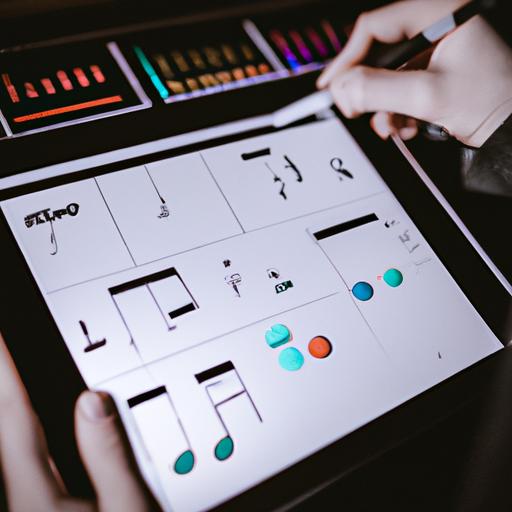How Long Have Humans Been Making Music?
Have you ever wondered how music became an integral part of our lives? how long have humans been making music? Join me on a melodious journey through time to explore the origins of human music.
Introduction
Music, a universal language that transcends cultural boundaries, holds a special place in human culture and history. It has the power to evoke emotions, tell stories, and bring people together. But have you ever stopped to ponder how music originated? Understanding the roots of human music is crucial in unraveling the depths of our cultural heritage.
Importance of Music in Human Culture and History
From ancient civilizations to modern times, music has played a vital role in shaping our societies. It has been an integral part of rituals, celebrations, and expressions of emotions. Music has the extraordinary ability to reflect the values, beliefs, and aspirations of a particular culture, acting as a time capsule that connects us to our ancestors.
Significance of Understanding the Origins of Human Music
By delving into the origins of human music, we gain profound insights into the evolution of human creativity, communication, and expression. Unraveling the mysteries of our musical beginnings helps us appreciate the rich tapestry of human culture and fosters a deeper understanding of our own musical experiences. It allows us to trace the threads that connect us to our ancestors and understand the universality of music across time and space.
In the next section, we will explore the early evidence of musical expression, unearthing the remarkable artifacts and paintings that provide glimpses into the origins of human music. Join me as we embark on this enchanting journey through time, where melodies echo across millennia.
Early Evidence of Musical Expression
Prehistoric Musical Instruments and Artifacts
As we delve deeper into the origins of human music, we encounter fascinating glimpses of prehistoric musical instruments and artifacts. These remarkable findings provide us with tangible evidence of our ancestors’ musical endeavors.
Archaeologists have unearthed a treasure trove of ancient musical instruments that date back thousands of years. Flutes made from bone, ivory, and even bird feathers have been discovered, showcasing the resourcefulness and ingenuity of early humans. These ancient flutes mesmerize us with their haunting melodies, transporting us to a time when music was born from the depths of human ingenuity.
But it doesn’t stop at flutes. Drums, rattles, and stringed instruments have also been uncovered, giving us a glimpse into the diverse range of early musical expression. These ancient instruments, crafted with precision and care, reveal the innate human desire to create and communicate through the language of music.
Cave Paintings and Engravings Depicting Musical Scenes
Beyond the physical artifacts, cave paintings and engravings offer us a visual window into the musical scenes of our ancestors. Deep within the labyrinthine caves of Europe and other parts of the world, these ancient artworks unveil the profound connection between music and human existence.
In caves such as Chauvet-Pont-d’Arc in France and Altamira in Spain, stunning depictions of dancers, musicians, and musical instruments adorn the walls. These masterpieces, created thousands of years ago, capture the rhythmic movements and joyous celebrations that accompanied early musical performances. The vivid colors and intricate details bring the ancient melodies to life, resonating with us across the vast expanse of time.
By studying these prehistoric musical instruments, artifacts, and cave paintings, we gain a deeper appreciation for the ingenuity, creativity, and cultural significance of early human music. Join me in the next section as we explore the ancient civilizations that nurtured and expanded upon these early musical beginnings.
Music in Ancient Civilizations
Mesopotamia: The Birthplace of Written Music
Step back in time to the cradle of civilization, Mesopotamia. This ancient region, nestled between the Tigris and Euphrates rivers, birthed not only the earliest known forms of writing but also the foundations of written music. The Sumerians, with their cuneiform script, left behind clay tablets containing musical notations. These remarkable artifacts provide a tantalizing glimpse into the music of this ancient civilization, allowing us to decipher and recreate melodies that were composed thousands of years ago.
Imagine the melodies that once echoed through the temples and palaces of Mesopotamia. The music served various functions, from religious ceremonies to entertainment. It was intricately intertwined with the social fabric of the society, reflecting their beliefs and values.
Ancient Egyptian Music and Its Role in Society
The land of pharaohs and pyramids, ancient Egypt, boasted a vibrant and sophisticated musical tradition. Music was an integral part of religious rituals, cultural events, and even everyday life. Egyptian music was characterized by its enchanting melodies and rhythmic patterns, often accompanied by instruments such as harps, flutes, and drums.
Inscriptions on tomb walls and artifacts depict musicians playing their instruments and dancers swaying to the music. The Egyptians believed that music had the power to connect the earthly realm with the divine, and they used it as a means to honor their gods and communicate with the supernatural world.
Greek and Roman Musical Traditions
As we move forward in time, we encounter the rich musical traditions of ancient Greece and Rome. The Greeks, known for their contributions to philosophy, arts, and sciences, held music in high regard. They believed that music had the ability to shape character and influence emotions. Greek music encompassed a wide range of genres, from solemn hymns to lively dances.
Similarly, the Romans inherited and expanded upon the musical traditions of the Greeks. Music played a significant role in their theatrical performances, religious ceremonies, and public events. The Romans embraced various musical instruments, including the lyre, flute, and trumpet, to create captivating compositions that resonated with their audiences.
The echoes of Mesopotamian, Egyptian, Greek, and Roman music still reverberate through history, reminding us of the profound impact these ancient civilizations had on the development of music. Join me in the next section as we explore the enchanting melodies that emerged during the medieval and Renaissance periods.
Music in Medieval and Renaissance Periods
A. Gregorian Chants and Sacred Music
During the medieval period, a dominant form of musical expression emerged known as Gregorian chants. These monophonic melodies, sung in Latin, were integral to religious ceremonies in the Catholic Church. With their ethereal and solemn tones, Gregorian chants created a spiritual atmosphere, transporting listeners to a realm beyond the mundane.
Gregorian chants were often sung by monks and were characterized by their melismatic nature, where multiple notes were sung for a single syllable. These chants, passed down through oral tradition, played a significant role in preserving musical knowledge and serving as a foundation for future musical developments.
B. Development of Musical Notation and Polyphony
The medieval period also witnessed a major breakthrough in the form of musical notation. This revolutionary system of writing music allowed composers to accurately document their compositions and facilitated the dissemination of musical knowledge. With the advent of musical notation, a new era in musical expression began.
Polyphony, the art of combining multiple melodic lines, flourished during the medieval and Renaissance periods. Composers experimented with harmonies and counterpoint, giving rise to intricate and complex musical compositions. Polyphonic music, often performed in churches and courts, added depth and richness to the musical landscape of the time.
C. Renaissance Composers and Their Contributions
The Renaissance period saw the emergence of remarkable composers who pushed the boundaries of musical expression. Figures like Josquin des Prez, Giovanni Pierluigi da Palestrina, and Thomas Tallis left an indelible mark on the musical landscape with their innovative compositions.
Josquin des Prez, known for his intricate polyphonic works, explored new harmonies and expressive techniques. Palestrina, on the other hand, focused on creating balanced and serene compositions, often used in sacred settings. Tallis, a prominent English composer, contributed to the development of English choral music, leaving a lasting legacy.
The medieval and Renaissance periods laid the foundation for the musical traditions we cherish today. Join me in the next section as we dive into the evolution of music in the modern era, exploring the advancements in musical instruments and the emergence of diverse genres and styles.
Evolution of Music in the Modern Era
A. Musical Instruments Advancements and Their Impact
Music in the modern era has witnessed significant advancements in the development of musical instruments. Innovations in instrument design and construction have expanded the possibilities of sound, allowing musicians to explore new horizons of creativity. From the invention of the piano in the 18th century to the synthesisers and electric guitars of the 20th century, these advancements have revolutionized the way we create and experience music.
The evolution of musical instruments has not only enriched the sonic palette but has also influenced the creation of new genres and styles. The introduction of instruments like the saxophone and the electric bass guitar spurred the development of jazz and rock music, respectively. The versatility and unique timbre of these instruments opened up new avenues for musicians to express themselves and connect with audiences on a deeper level.
B. Emergence of Various Music Genres and Styles
As music continued to evolve, the modern era witnessed the emergence of various music genres and styles. From classical to jazz, blues to hip-hop, each genre carries its own distinct characteristics and historical significance. These genres became platforms for artists to narrate their stories, share their experiences, and challenge societal norms.
The advent of recording technology and the rise of radio and television further propelled the popularity and dissemination of different music genres. Musicians and bands gained unprecedented exposure, reaching global audiences and transcending cultural boundaries. This cross-pollination of musical ideas and influences led to the fusion of genres, giving birth to exciting hybrids like reggae-rock, electronic-pop, and R&B-infused hip-hop.
C. Technological Advancements and Their Influence on Music Production
The modern era has witnessed remarkable technological advancements that have transformed the landscape of music production. From the invention of the phonograph to the digital revolution, technology has revolutionized how music is recorded, produced, and distributed. The advent of software-based music production tools, such as digital audio workstations (DAWs) and virtual instruments, has democratized music creation, empowering artists to produce professional-quality music from the comfort of their own homes.
Additionally, the internet and streaming platforms have revolutionized the way we consume music, providing easy access to a vast library of songs from around the world. Artists can now connect directly with their fans, independent musicians can reach global audiences, and music enthusiasts can discover a diverse range of sounds with just a few clicks.
As we reflect on the evolution of music in the modern era, it becomes evident that technological innovations have not only expanded the possibilities of music creation but have also transformed the way we experience and interact with music. It is an exciting time to be a part of this ever-evolving musical landscape, where the boundaries of creativity continue to be pushed.
In conclusion, the evolution of music in the modern era has been shaped by advancements in musical instruments, the emergence of various genres and styles, and the influence of technology on music production. Join me in the next section as we wrap up our journey and reflect on the longevity and universal appeal of music throughout human history.
Conclusion
In conclusion, the question “how long have humans been making music?” takes us on an awe-inspiring journey through the annals of human history. Music has been an inseparable part of our existence for thousands of years, shaping our cultures, beliefs, and identities.
By exploring the early evidence of musical expression, the music of ancient civilizations, the developments in medieval and Renaissance periods, and the evolution of music in the modern era, we gain a deeper appreciation for the longevity and universal appeal of music.
Understanding the origins of human music allows us to connect with our ancestors, appreciate the diverse musical traditions around the world, and recognize the profound impact that music has on our lives. It is a testament to the ingenuity, creativity, and emotional depth of the human spirit.
So, the next time you find yourself humming along to your favorite song, take a moment to reflect on the rich tapestry of musical heritage that has been woven throughout human history. Let the melodies of the past intertwine with the rhythms of the present as we embrace the timeless magic of music.
Join me on this never-ending journey of discovery, as we continue to celebrate the extraordinary gift of music that unites us all.
Now, as we conclude our exploration of the origins of human music, let us carry this newfound knowledge and appreciation with us, cherishing the melodies that connect us to our past and shape our future.
Thank you for joining me on this musical odyssey!





